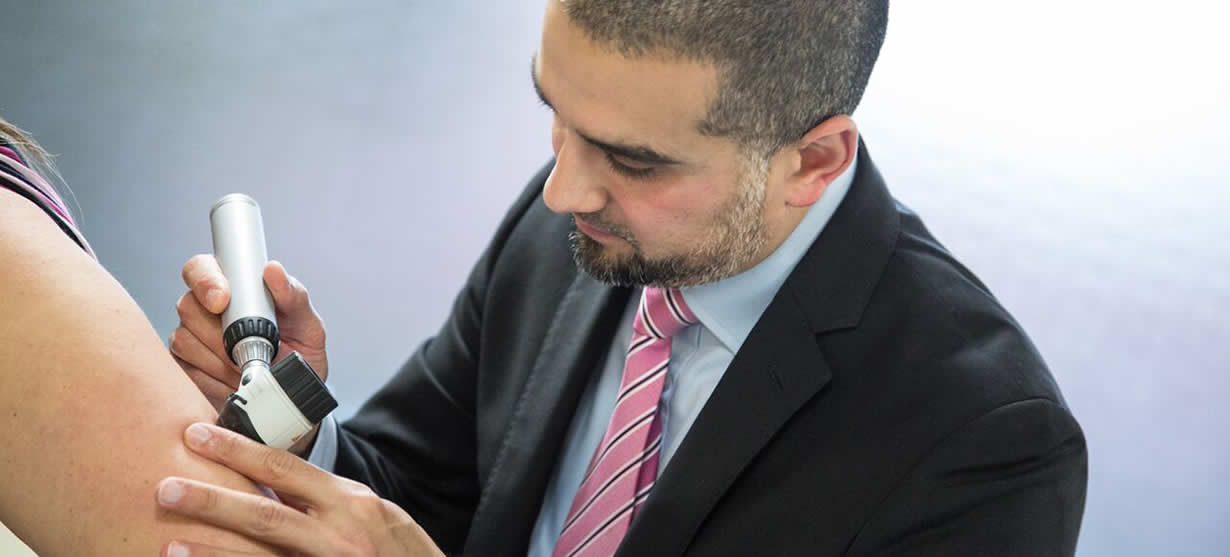Dr Hussain’s Guide to Checking Your Skin

When it comes to skin cancer, early detection is the key to cure. Although Dr Hussain will meticulously examine your skin when you come to see him, it is vital that you get used to checking your own skin on a regular basis to help spot any new blemishes or changes to your moles or freckles between follow up appointments.
Dr Hussain recommends that you check your skin carefully once every three months or more frequently if you’ve had a previous skin cancer. It’s helpful to do this at a regular interval eg the 1st of each month. Good light is essential and it is important to get your partner involved to help examine areas such as your back and scalp. Become familiar with your skin by learning where your birthmarks, moles and blemishes are and what they usually look and feel like so that you can recognise any changes. Check yourself from head to toe. Don’t forget to check all your skin, including the areas which are not exposed to the sun.
Dr Hussain suggests that when you look at your skin be aware of changes in the size, colour, shape, or texture of a mark on your skin. If you have lots of moles you cannot be expected to monitor them all in great detail. A sensible way to guide you is that you are looking for one that ‘stands out from the crowd’.
Signs of a potential skin cancer include:
- A sore that crusts or bleeds but never fully heals
- Brown or black streaks underneath a nail.
- A firm, shiny transparent, pink or red bump with tiny blood vessels visible on the surface.
- A new, smooth skin lump (nodule) with a raised border and crater like centre.
- Waxy-feeling scar or lumps within a scar.
- Changing moles with suspicious features (see below).
- Pay special attention to moles, especially ones that have recently changed.
When looking at moles, Dr Hussain advises his patients to keep in mind ‘ABCDE’:
- Asymmetry – Does one half of your mole look different from the other?
- Border – Is the edge (border) of your mole irregular, ragged, notched or blurred?
- Colour – Does the mole have variety of colours within it? Has the mole got darker?
- Diameter – What is the size of the mole? Is the mole getting bigger?
- Evolution – Is the mole continuing to change of its own accord? Has it started to bleed?
Other signs to look out for are changes in:
- Consistency – such as softening or small pieces that break off easily.
- Surface – such as scaling, oozing, bleeding, or crusting.
- Changes to the surrounding skin, such as redness or swelling.
- Sensation – such as itching, tingling, or burning.
- Elevation – such as thickening or rising of a previously flat mole.
If you are worried about changes in any of your moles or you have a new spot that does not heal after two weeks, you should get in touch with Dr Hussain as soon as possible.
Remember, ‘if in doubt…….get Dr Hussain to check it out’

